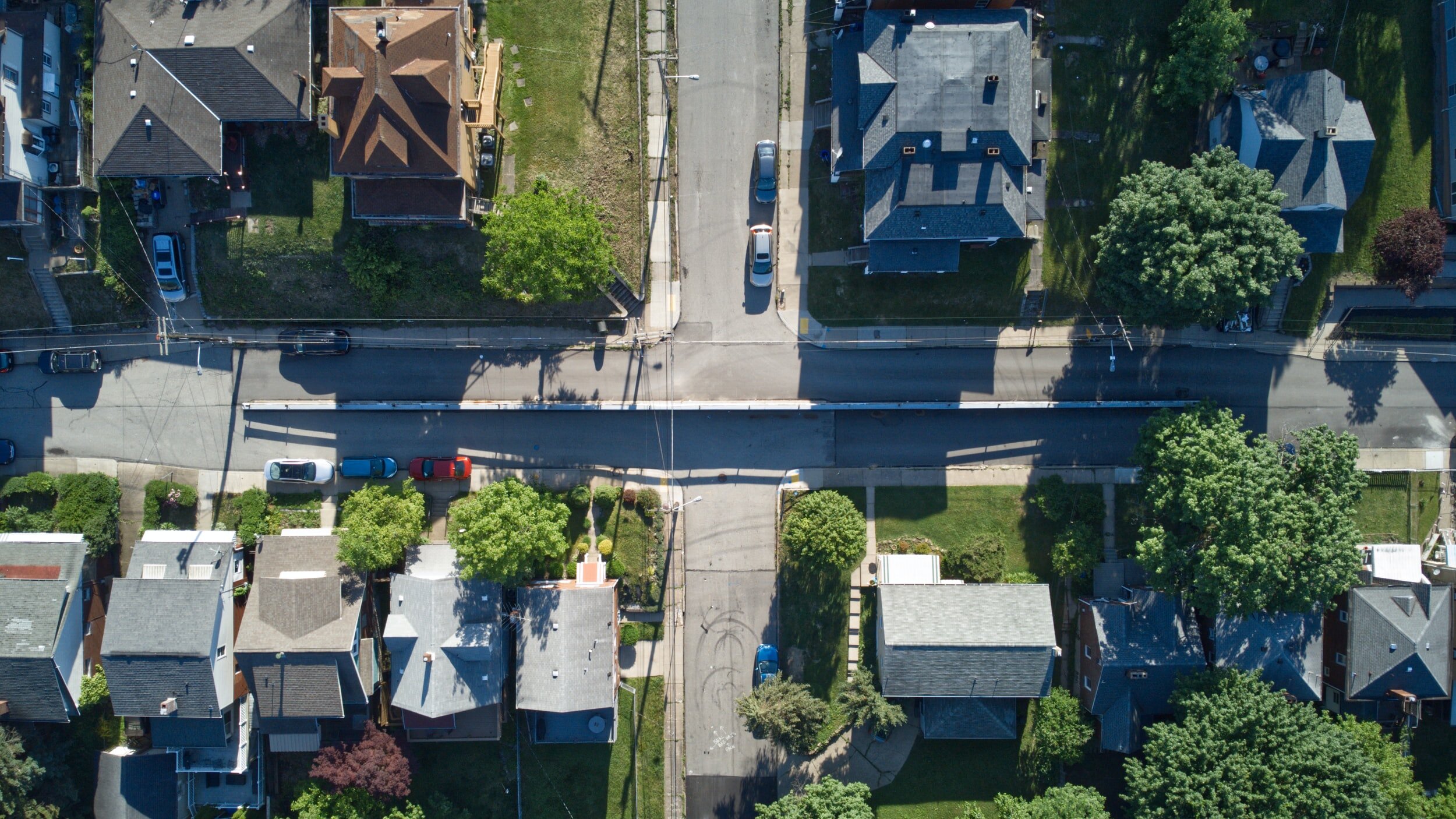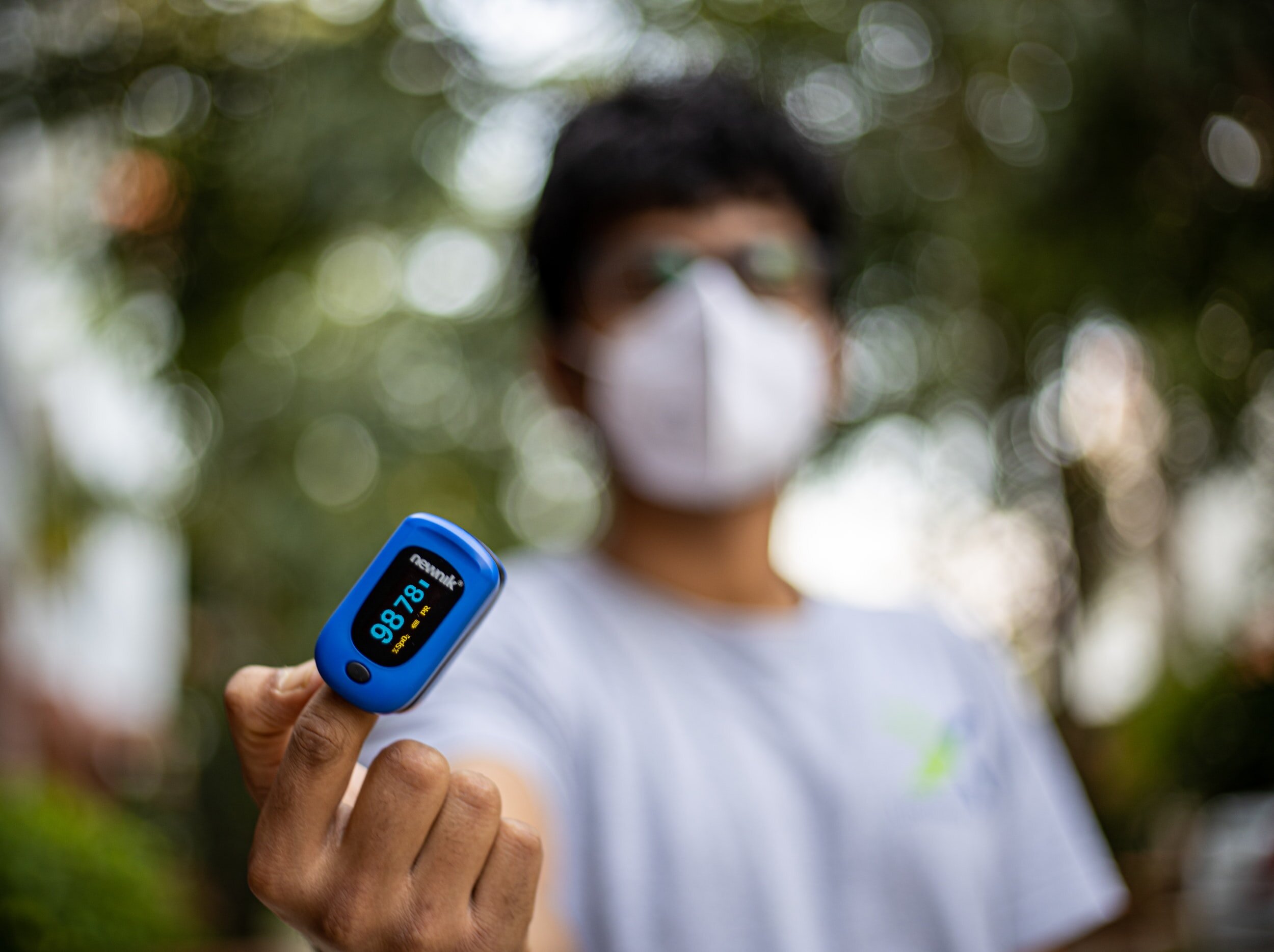Lived Experience, Communities, and Health
Contributors
Araceli Camargo, MSc Neuroscience (Kings College London)
Marie Müller, PhD Candidate in Neuroscience at University College London
Charlotte Kemp, MSc Cognitive Neuroscience & Psychology
Daniel Akinola-Odusola, MSc Neuroimaging (Kings College London)
We are a grant and citizen supported lab, we use our funding to create free scientific reports, which provide foundational knowledge about health, health inequities, and health justice. We prioritise the hiring of scientists and researchers from marginalised communities to ensure that the lived experience is covered in an ethical, inclusive, and accurate manner.
Our goal is to be an open lab that is “for the people by the people”.
Contamination to Water, Air, and Soil has been going on for centuries due to a dependence on extractive/consumerist economies, which need to continually extract from the land and to find ways to mitigate waste. As these economies continue to grow, they encroach further on the places that people inhabit, which is resulting in poor health outcomes ranging from cancer, cardiovascular, respiratory, to depression, anxiety, and neurodevelopmental diseases.
Epidemiologists have long linked contaminated soil vapours, air pollution, and water contamination with various non -communicable diseases. Equally, communities have a long history of speaking out and documenting what it is like to live in contaminated places, including the poor health outcomes that they experience.
Despite this, industry continues to contaminate the places that we live and contribute to our poor health outcomes. This document will look at how industry gaslights communities, the mistakes science makes, and the significance of listening and acknowledging the lived experience. This report is for both practitioners and citizens who are experiencing environmental and health injustice.
The purpose of the report is to create an equitable science environment that can expedite changes in policy that protect People and Planet, not profit.
Framings
1
‘What amount of “x” pollutant makes people sick?’, is an illegitimate question. It is also the usual question that is presented when investigating the link between an environmental pollutant and human health. It is illegitimate for three reasons.
It is unmeasurable, as how a toxic pollutant affects people depends on their specific biological makeup. Some may be affected by very low levels whilst others may have more tolerance.
It puts the burden on the community to prove that they are being poisoned rather than on the industry to guarantee health and safety.
Health is more than just the direct effects of a toxic pollutant; it is also how the pollution affects our daily lives (e.g., sleep quality, relationship to our environment, sense of safety, mobility etc.).
A pollutant is toxic and presents a health risk at any level.
2
A single person experiencing sickness may not be ‘statistically significant’, but their experience is significant (as in ‘substantial / meaningful / important’).
There is a common (mis)understanding that in order for a phenomenon to be significant it has to be recurring and ‘statistically significant’. For example, if 1 in 50 people in a neighbourhood became sick from air pollution it would be seen as non-significant. As, statistically speaking, 1 in 50 in this context could be due to chance and, therefore, would not be considered evidence linking air pollution to poor health. However, for the person who is experiencing poor health it does not matter that their experience is ‘statistically non-significant’ because they are still being affected and experiencing poor health.
We cannot negate or erase a person’s experience only because we cannot measure or detect it with ‘traditional’ methods and statistics. We must re-evaluate the logic we are applying to a certain statistic. If an exposure causes the ill-health or even death of a single person, this effect is significant.
By neglecting people’s lived experience and relying on average effects from ‘large data’ only, we may miss important nuances of the association of a certain exposure with health.
3
Statistics and data are a crude manner to measure experience; therefore, they can only be one element that is used to observe and understand the effects of pollutants on health.
The other part is listening to observations and stories of people living in areas of environmental injustice.

“
We cannot negate or erase a person’s experience because we cannot measure it.
Defining
Lived Experience
The term ‘lived experience’ is often used intuitively without a clear definition. However, it is worth exploring its components ‘lived’ and ‘experience’ a) to identify the main elements of ‘lived experience’, b) to be able to distinguish ‘lived experience’ from ‘practitioner experience’, c) to understand the great value of ‘lived experience’ for public and community health research and policy, and d) to understand the best methods to accurately include it in scientific work.
The Cambridge Dictionary defines ‘experience’ as 1. (the process of getting) knowledge or skill from doing, seeing, or feeling things, 2. something that happens to you that affects how you feel, and 3. the way that something happens and how it makes you feel.
The Merriam-Webster dictionary defines ‘experience’ as 1. direct observation of or participation in events as a basis of knowledge, 2. practical knowledge, skill, or practice derived from direct observation of or participation in events or in a particular activity, 3. something personally encountered, undergone, or lived through, 4. the conscious events that make up an individual life, and 5. the act or process of directly perceiving events or reality.
These definitions of ‘experience’ suggest that experience is a) individual, b) direct, and c) associated with knowledge and/or feelings about the matter at hand. Of course, what exactly is meant by ‘experience’ depends on the context. The added prefix ‘lived’ emphasises that ‘lived experience’ describes an individual’s direct, first-hand experience of a phenomenon by having lived through it. One could argue that ‘experience’ already captures that individual, direct, first-hand element of ‘lived experience’. However, the important difference between ‘lived experience’ and ‘practitioner experience’ becomes evident in the contexts of science and policy where phenomena are investigated and decisions are made by people who do not have ‘lived’ experience of a phenomenon. For example, a researcher may have experience with and knowledge about mental health disorders from studying them. However, this is very different from having ‘lived’ experience of a mental health disorder. An individual’s ‘lived experience’ adds an important perspective and can therefore help to understand and/or explain a given phenomenon.
Based on the above elaboration and on previous attempts to define ‘lived experience’ (source/source/source) we offer the following definition: Lived experience is an individual’s direct, first-hand experience from living through a specific phenomenon. This, of course, is a rather brief and generic definition. However, we argue that it is necessary to keep the definition generic in order to be inclusive of the many different forms that lived experience can take. Nevertheless, we want to point out the main elements of lived experience (LE) that make it so valuable for public health research:
LE is direct, first-hand experience; it is authentic (source)
LE is associated with knowledge, insights, and understanding of a phenomena in a specific place and through the passing of time (source)
LE is individual; however, LE can also be shared/typical (source)
LE can be documented and observed through a variety of methods
LE has no age limit; children to adults should be taken into consideration
LE should be inclusive of marginalised communities
It should be noted that the boundaries between ‘practitioner experience’ and ‘lived experience’ can sometimes be blurred. Nevertheless, in this report, we will highlight why ‘lived’ experience in particular has a great value and is essential for future public and community health research and policy.

“
Lived experience is an individual’s direct, first-hand experience from living through a specific phenomenon.
Defining
Lived Expertise
Lived experience is associated with knowledge, insights, and understanding of a phenomenon. In other words, lived experience is associated with expertise or ‘lived expertise’ (source). The knowledge, insights, and understanding gained by living through something—the lived expertise—can never be replaced by the knowledge, insights, and understanding gained from working with or from studying something. This is not to say that the latter is not valuable. Rather, different types of expertise are needed to truly understand a given phenomenon and should therefore complement each other. This is to create a healthy and equitable scientific ecosystem that affords a fuller comprehension of the link between pollutants and health.
Nonetheless, highlighting the value of ‘lived expertise’ is important because it is not yet acknowledged as a valid source of knowledge. So, why is the ‘lived expertise’ of people so invaluable?
The Value of Lived Experience in Research
A scientist conducts research to gain knowledge in their area of interest. As described above, lived experience is associated with expertise. People with lived experience have first-hand knowledge of and about a given phenomenon. Therefore, it is only logical that a scientist would want to learn about this knowledge in order to gain a better understanding of their area of interest. Similarly, it is only logical that a policymaker would want to learn about the different insights based on both large data studies and lived experience in order to get a comprehensive picture of the evidence on which they will base their policy. However, expertise from lived experience is not yet acknowledged as valid, essential knowledge. This is problematic because large data studies on population health come with several limitations. The collection of large amounts of data on environment and health is useful to capture generic patterns and trends. To make sense of the vast amount of information, scientists describe, correlate, and model the data. These analyses often are associated with error, uncertainty, and bias. We will now point out how considering people’s lived experience can address and mitigate such limitations.
Day to day changes: Living through a phenomenon is a daily experience with nuances that develop through the passage of time. For example, some days may be tougher due to weather or a change in a person’s life or other changes in the environment. A monitoring device cannot deliver these important changes (source).
Phenomenology: Being exposed to an environmental pollutant or any other health threat is not just about units of measurement, it is a full sensorial experience, which all have an effect on the psychosocial experience of the pollutant. There is stress and trauma in the experience, which also has to be considered as part of the pollutant’s impact (source).
Varied degrees of impact: Each person has a different biological tolerance to environmental stressors and even to disease depending on what is already happening in their body and life. For example, if a person has obesity, they will experience air pollution differently and could be impacted at much lesser levels than a person with no health conditions. Therefore, generalised thresholds set by health organisations or policy cannot speak for the varied biological impacts of a pollutant. The individual impact of a pollutant is a necessary piece of information in every research project involving environmental pollution (source).
Expertise through time: Expertise takes time to build; therefore, a person living in an environment for a sustained period of time develops an expertise through the act of spending time in that environment. The time in the environment gives them the opportunity to observe and chronicle the changes and activities related to the environmental pollutant in a manner that researchers would not be able to do as non-residents.
Elements of Lived Expertise
As it has already been stated, the lived experience is multifaceted and multi-sensorial; therefore, its different elements should be identified.
How a person senses the pollutant
How does the pollutant affect their living conditions
What are the psychosocial stressors from experiencing the pollutant
What are the symptoms a person associates with the pollutant
What are the daily changes the pollutant creates in a person’s routine
How does the pollutant affect a person’s community and neighbourhood
How does the pollutant affect a person’s perception of their neighbourhood and community
How does the pollutant affect existing health conditions
How does the pollutant affect their interaction with others
How does the pollutant affect their self care routines; rest, exercise, sleep, family time
How does the pollutant evolve day by day.

“
The knowledge, insights, and understanding gained by living through something—the lived expertise—can never be replaced by the knowledge, insights, and understanding gained from working with or from studying something.
Defining
Community Health
Community health as a field has historically been anchored in innovative public health methods and programmes ‘directed at reducing risk factor prevalence, decreasing acute and chronic disease burden and injury occurrence, and promoting health’ (source). Earlier efforts to define community health have been developed through academic-centered sources that do not reflect the importance of community engagement in community health. Community health without community engagement leads to methods and programmes that happen to communities, not with, by, or for them.
A proposed framework around the definition of community health involves four focus areas that advance beyond the academic-centered approach (source).
Community
The first, community, encompasses population groups and the locus (e.g., place, venue, or other unit) of programs, interventions, and other actions in a way that can involve overlap between the two.
Health
The second, health, may be defined differently as a function of a community's experience and expectations meaning a given community may further define the enterprise of community health and how community health is put into action.
Interventions
The third area, interventions, encompasses the scope and nuance on interventions based on community input, needs, perspectives and goals.
The Science of Community Health
The fourth, the science of community health, encompasses the methods used within the field to develop and evaluate evidence and guide further intervention. Essentially, lived experience is needed to shape how we define and enact community health.

“
Community health without community engagement leads to methods and programmes that happen to communities, not with, by, or for them.
Data and Research: Limitations & Shortcomings
Multi-purpose studies: no specific data on a specific phenomenon
Most large-scale data studies are ‘multi-purpose’ studies. For example, large longitudinal studies collect data on a wide range of factors concerning people’s lives, so that many societal questions can be answered with the data collected. The richness of these data is a great advantage of large-scale studies. However, because the studies are multi-purpose, they do not provide specific data on a specific phenomenon. Thus, although there may be some data on some factors relevant for the phenomenon, many other important factors may not be captured. This means A) that an observed phenomenon cannot be explained fully and/or B) that the data provides a biased description of an unobserved phenomenon. Let us take the health of people living in two different neighbourhoods as an example. In scenario A, one may observe differences in people’s health between the two neighbourhoods. However, the data available are not sufficient to explain these differences. In scenario B, one may use the data available to describe the health of people living in the two neighbourhoods. However, these data may be biased and may not provide an accurate representation of people’s actual health. In both scenarios, we do not have sufficient information to understand and/or explain the phenomenon at hand. Considering people’s lived experience would help to better understand and/or explain a phenomenon because people can provide specific information on their experience and on the spatial, temporal, and historic context.
Averages: problematic when applied to the individual
In research, scientists often work with averages to describe a given phenomenon. These averages are useful to grasp and communicate large amounts of data. However, depending on the distribution of the data, some observations may be very different from the average. For example, on average, a community may be described as ‘healthy’. However, not all individuals of the community have the same health. Some have better health; some have poorer health. Similarly, average air pollution levels in an area may be below a given official threshold. However, some individuals living in the area are exposed to more air pollution than others. This is problematic at different levels. First, one may have individual data on an outcome (e.g., health) and aggregate data on an exposure (e.g., air pollution). If one investigates the link between outcome and exposure, their results will likely be biased because of so-called exposure misclassification (source), leading to false conclusions about the relationship between outcome and exposure. Second, one may base policy and planning decisions on (biased or unbiased) averages, neglecting that these averages do not apply to all individuals. For example, the WHO has established ‘safe’ levels of air pollution which are often used to justify policy and planning decisions. However, first of all, even if the average level of air pollution is below a threshold, at times, air pollution levels can be much higher. Second of all, even if a given level of air pollution is considered ‘safe’, it may not at all be safe for individuals who are more vulnerable due to existing health conditions, exposure to air pollution in other places, or accumulated exposure to a range of stressors. This is very much related to the so-called Ecological Fallacy which describes that relationships between variables at an aggregate level imply the same relationships at the individual level (source). Considering people’s lived experience would allow for the collection of individual data and, therefore, mitigate the many limitations associated with averages and aggregated data.
Exposure: the individual moves beyond their ‘neighbourhood’
In large, quantitative studies, researchers often aim to find quantifiable patterns and correlations in the data. In place and health research, scientists often define an area of interest, for example, an area of exposure. They then collect data on the exposure of interest (e.g., air pollution) for that area and link it to data on the outcome of interest (e.g., health). Above, we have already identified some limitations of this approach. Another major limitation is that the exposure area (e.g., a postcode, a LSOA, or a ward) is not actually the true geographic context that an individual experiences (source): the individual is unlikely to be exposed to all of the defined area; the individual is likely to be exposed to areas outside the defined area; the individual is likely to spend different amounts of time in different areas; and the individual is likely to engage in different activities in different areas and at different times. In brief, capturing static, average information on a given exposure in one area is not sufficient to understand the individual’s true exposure. This, again, is associated with so-called exposure misclassification which biases our understanding of a phenomenon (source). Considering people’s lived experience would allow for the collection of individual data on their true exposure throughout day, year, and life, in turn, allowing for a better understanding of the true effect of an exposure on health.
The issues above can be explained by one common limitation: no sufficient information on the individual. Large, quantitative data are a valuable resource for population health research. However, often these data are not enough to explain the nuances or to capture the individual’s experience of a phenomenon. Data on people’s lived experience is a valuable source of information to fill these gaps and to better understand the phenomenon at hand and, in turn, find ways and solutions to improve population and community health.
Pathways to Community Erasure
There is a very clear problem that we seek to solve and that is to stop the intentional and unintentional erasure of community expertise. Firstly, it makes the process of environmental justice and climate adaptation longer. Secondly, the erasure of People’s experience can impose avoidable trauma, which is unethical. Thirdly, when we erase People’s experiences, the value, credibility, and accuracy of science diminishes. The following are some of the methods used to erase community expertise.

Knowledge Supremacy
This is a term identified by Centric Lab to define a knowledge pool that self-identifies as supreme to systematically dictate the knowledges that are valuable, trusted, and acknowledged, resulting in hegemonic policies that affect our health.
Within knowledge supremacy there are five pathways in which people are erased through the use of science and data.

Deny self-reported community data due to reliability
Communities all over the world are documenting how industrial plants, landfills, gaswork sites, and polluted water are affecting their daily lives – yet they are being told that this information is not enough to change policy or make changes. This is part of a culture that lacks a rapport of consent.
“These “fenceline communities” are places where people cough. Where they carry asthma inhalers. Where every resident has a handful of neighbours who have died of cancer. Where refinery and government officials insist that chemicals in the air don’t harm them, and residents are sure that they know better.” - source
“Using a handheld decibel monitor Paul had previously attempted to monitor the noise of the nearby compressor stations, highlighting moments when the noise was higher than the permitted 55 decibels. However, the township government rejected his data, claiming that he had not taken into account the noise of local bullfrogs, which made the data inadmissible. As just one example, regulators routinely dismissed the many attempts by citizens to document environmental problems by collecting data and presenting it as evidence.” - source

Hide behind data; “we need more data”, or this is not the “right” data
In the case of Ella Roberts, it took 8 years and an autopsy to confirm air pollution as her cause of death in a 2020 landmark ruling. This is despite a 2018 report by Stephe Hodges, a leading Medical Research Council Clinical Professor concluding that Ella’s exposure to NO2 was a key driver of her asthma.
This report was based on a study he did correlating pollution sensor data near her home with tissue samples and the times she was hospitalised (source). Based on the thinking of “Good Enough Data” - linking air pollution to Ella Roberta’s poor health outcomes could have been determined by her initial hospitalisations (there were 27 in total) and her proximity to a congested roundabout. She didn’t need to die nor was an autopsy needed to understand how air pollution was affecting her biological systems or to make necessary changes to her neighbourhood.

Poor analysis and poor data collection
Collecting the wrong data, having an inaccurate design experiment, and poor analysis can all coalesce into an inaccurate scientific assessment. For example, in 2019 Centric investigated the methods behind Public Health England’s ruling on the health of a community in Southall (source). They determined that children of the area were not getting sick due to the gasworks site as absenteeism had not increased. However, this design failed to understand the community and identify other variables that could influence absenteeism.
The one obvious factor is the shift work nature of many People in Southall, which influences how many of their children can stay home if they are sick. There was no detailed investigation into how many times a child had to use an inhaler, hospitalised, or even complained about breathing problems (which they did) (source). Therefore ruling that there is no link between air pollution and a child’s health based on absenteeism alone is not a reliable data source.

Quantifying to erase
When looking at environmental justice, people are often erased due to lack of numbers. One person in a whole community does not seem to arouse interest in science or in authorities meant to protect ALL of our health.
A campaign called ‘Truth about Zane’ seeks an investigation into the death of a young child who died after being exposed to 25,000 parts per million of Hydrogen Cyanide Gas. He was the only death following a flooding incident in Surrey that left a whole community exposed to the gas (source).
One death is too many; one incident is a phenomenon, and therefore worth investigating.
SIDE NOTE:
GASLIGHTING IS A STRATEGY
Truth About Zane
It has to be noted that most of the policies in place are there to protect industry, those who seek to pollute our air, water, and soil. Therefore, these strategies of erasure are gaslighting strategies to silence People and keep polluting with the support of legal structures. In the case of Zane - it was later found out that “The existence of a landfill was denied by the authorities. After Zane died the truth of 8 decades of dumping and migrating hazardous landfill gas that kills were discovered by the BBC national news.”
Broken Ground
Broken Ground is a podcast by the Southern Environmental Law Center. Join them as they dig up environmental stories in the South and hear from the people bringing those stories to light.
The current season, Broken Ground talks with women on the frontlines of the fight for environmental justice.
Creating an Ecosystem of Science with Community Lived Expertise
Moving forward science has to successfully work with community expertise and scholarship. This is not to choose one method over another, it is to create an equitable and thriving ecosystem of science. One that can help bring forward environmental justice and a healthier Planet.
Lived experience research methods can be broken down into three important steps: research methodology, data collection, and analysis/dissemination. We will present some key findings on how lived experience can be accounted for in each step
Research Methodology
Innovative research methodology is the foundation of how lived experience is reflected in community health research. Interpretive phenomenology (also referred to as hermeneutics) is a prominent philosophy and research methodology to describe, understand and interpret participants' experiences in fields such as nursing (source). The main concepts of IP are: recognising people within the context of their realities (dasein), what is already known from past experience (fore-structures), how people experience the world (life-world existential themes), and the iterative and circular process of re-examination to discover the true meaning of an experience (hermeneutic circle). IP is a widely accepted lens to hold other methodologies and methods accountable to lived experience, such as when researchers combined IP methodology with community-based participatory research (CBPR) collection to generate insights into the effect of chronic disease stigma and shame (source).
A research methodology that reflects lived experience must also be consistent and consensually accepted by the community to be effective and fit-for-purpose. The process of cultural consent pays off both in the accuracy of the information captured and in the retention through community buy-in. In the case of a study on the prevalence of asthma in the New Zealand Māori community, researchers were able to attain 100% retention in their longitudinal study with parents by adopting the Kaupapa Māori (Māori way), an indigenous-based research paradigm that framed the study and methods in the context of community Māori philosophy and principles (source). Researchers even got consent and advice from Kaumātua and kuia (tribal elders) from Tu Kotahi in how to run the study. This process created trust and transparency between researchers and the community, a necessary factor of lived experience research.
Data Collection
Data collection methods need to be adaptable, accessible, and ethical in order to account for lived experience. This often means that more than one method is used or that tools generate novel types of data that result in trade-offs between volume and quality. The Kaupapa Māori Research paradigm involved seasonal interviews as well as questionnaires and the Photovoice exercise where they gave a disposable camera to participants who were asked to take photographs of whatever they felt was relevant to their experience of managing asthma. This collection paradigm was multimodal, child friendly, and culturally appropriate.
Low-cost accessible tools are also a valid way of capturing raw yet authentic experiences in the form of “just good enough” data from communities. The use of low-cost and accessible digital technologies to monitor environments, Citizen sensing, has contributed to new types of environmental data and data practices (source). Some of the citizen data in this set of collection methods may fall outside of the standard parameters of scientific legitimisation but off the opportunity to create on the ground data for further investigation and determine high level patterns of interest on factors such as location and time.
Lived experience in environmental issues presents a strong use case for the concept of “just good enough” data. In one study, citizens were provided with toolkits to monitor the pollution in their area but also provided qualitative accounts of their experiences and collaborated with researchers to determine emission sources (source).
Analysis and dissemination
Community health must be analysed and disseminated with community consent, iteration, and collaboration. The Citizen sensing study achieved a representation of lived experience in the analysis and overall narrative of results through the concepts of ‘data stories’ and ‘distributed authors’ where researchers, residents, designers, and programmers collaborated to determine the most accurate way to reflect the experiences of the community. Template analysis is a thematic analysis technique that is well suited to researching lived experience. The process involves analysing a subset of data and using the cluster of themes identified to refine future data collection. This technique reduces the risk of collecting a lot of qualitative data that cannot be coded into the initial template used for a study.
Research method suggestions
Treat cultural consent as concurrent with ethics approval and funding applications to ensure community buy-in, agency, and accuracy of their experience.
Iterative research processes allow the “final” analysis to naturally be more representative of the community.
Create explicit avenues for community framing of the story and data.
Multi-modal approaches to data allow more naturalistic forms of data to be complemented with more accepted methods of experimental design, collection, and analysis.
Lived experience research goals
Acknowledge lived experience in community health science.
Create accessible and accurate representations of community health phenomena.
Facilitate interdisciplinary, interindustry approaches to creating community health interventions.
Conclusion
This document is the start of creating better methodologies of science, specifically to investigate community health. Community health is tied to unjust policies and the knowledge supremacy that creates them, therefore, as scientists we must be aware of these parameters if we are to succeed at our role in environmental justice. Finally, we must think about the real-life consequences of our investigations and scientific analysis. The people that are living through a pollutant need more than just data, they need dedication and an ecosystem of support. Therefore if science can’t explain a phenomenon it must adjust its methods rather than deny it. Open data democracy
TEAM
Lead Writer: Daniel Akinola-Odusola (@DoativeDaniel)
Lead researcher and writer: Marie Müller (@marie_ahoi)
Editor: Araceli Camargo

